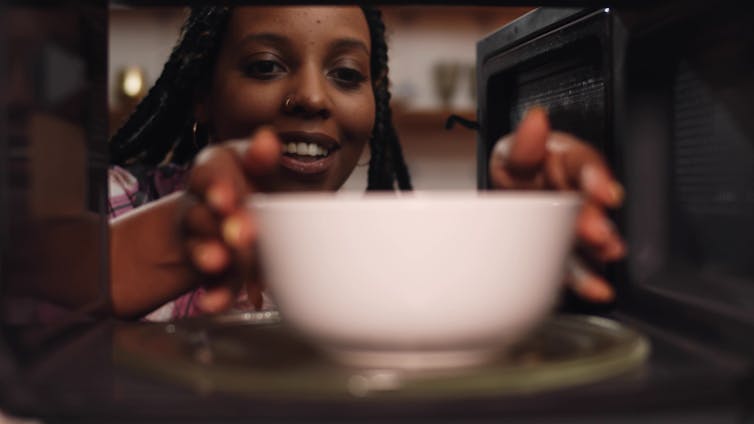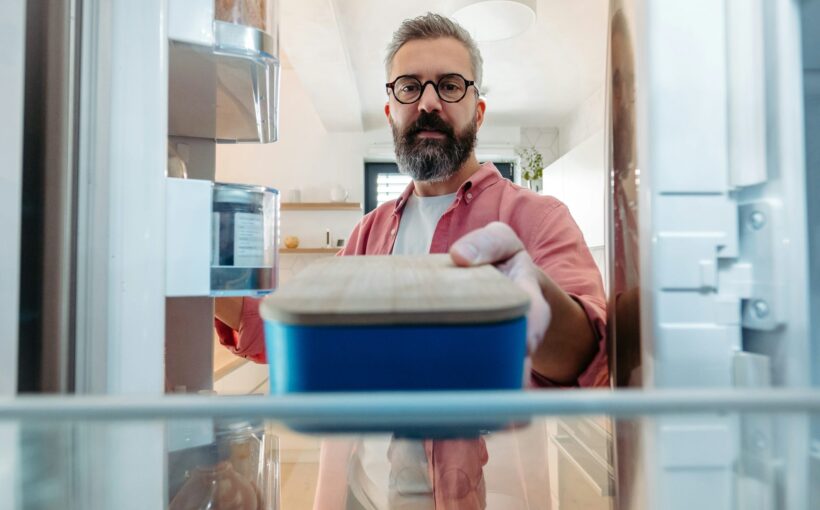
Eating leftovers can be a great way to save money, diversify your cooking repertoire and reduce food waste.
But eating leftover food can also be risky as these foods have already been exposed to bacteria in the environment. If you haven’t stored and re-heated leftovers correctly, you could be putting yourself at risk of potentially life-threatening food poisoning.
That doesn’t mean you should start avoiding leftovers, however. By following the the correct food safety practices, you can ensure you avoid harm when eating leftovers.
How quickly should leftovers be refrigerated or frozen?
Bacteria exist everywhere in our world, including in kitchens – and the foods within them. The bacteria that cause food to spoil can grow rapidly with the right nutrients, moisture and temperatures. Some double in numbers in as little as 20 minutes.
It’s important that any leftovers are put into the fridge or freezer as quickly as possible and within two hours maximum. This time advice is based on how quickly bacteria can grow in food at non-refrigerated temperatures, and means leftover food become less safe to eat the longer it is left at more than 5°C. You should also make sure that leftovers are covered. Clingfilm and airtight lids help prevent air from getting at the food. This is important, as most pathogens need oxygen to grow.
How long are refrigerated leftovers safe to eat?
Your fridge should be kept at a temperature of between 0 and 5°C, as this inhibits the growth of food poisoning bacteria on leftovers.
Leftovers must be eaten within two days, as any longer gives harmful bacteria more time to grow. Indeed, pathogens such as Listeria, which can cause flu-like symptoms, can even grow in refrigerated temperatures and are more likely to grow beyond two days – which is why this is the recommended time limit for storing your leftovers.
If you don’t think you’ll eat your leftovers within that timeframe, consider freezing them. Leftovers can be kept for up to three months if frozen at -18°C.
What is the safest way to re-heat your leftovers?
When you reheat leftovers, you must ensure the food is piping hot all the way through. If not, don’t eat it.
Leftover foods should be reheated to an internal temperature of at least 165°F (74°C). For sauces, stews, soups and gravy, it’s best to bring them to a full boil, stirring for at least three minutes. These practices will kill most bacteria and inactivate any heat-sensitive bacterial toxins that are present.
If reheating leftovers in the oven, set the oven temperature to at least 325°F (163°C or gas mark 3) and bake long enough to completely heat the food through to at least 74°C. If reheating leftovers in the microwave, you should also make sure they reach an internal temperature of 74°C before eating.

Reheating food using a slow cooker is not a good idea because if foods stay at a temperature less than 165°F for several hours, this can permit bacterial growth – increasing your risk of food poisoning.
Can you reheat leftovers more than once?
You really should not reheat leftovers more than once. Each time a food warms and cools, it provides the right temperature and amount of time needed for any harmful bacteria to start to re-grow.
This then makes it harder for heat kill all the pathogens present the next time you warm up the leftovers. If you don’t think you’ll eat all your leftovers within two days, consider freezing them.
Can you reheat a takeaway?
Whether you can safely re-heat takeaway foods depends on how you stored it.
If it was stored warm in the back of your car or left at room temperature in your home for more than two hours, then the meal may be a food poisoning risk – especially if you’ve already touched or partially eaten it (which introduces bacteria to the food).
But if you didn’t handle the food much and refrigerated it within two hours of purchase, then the takeaway is safe to re-heat – provided the next time it’s eaten it’s first heated to a piping hot temperature of at least 74°C. It also shouldn’t be stored in the fridge for more than two days.
There are some takeaway foods that you should be careful about saving as leftovers. Cooked rice dishes are possibly the most risky to save. Uncooked rice may contain spores of Bacillus cereus, a bacterium that causes food poisoning.
While the parent bacterium is killed when rice is cooked, its spores can survive the temperature of boiling water. If rice is not refrigerated within two to three hours of cooking, the spores can grow into bacteria which in turn release the rice toxins which give rise to food poisoning symptoms such as diarrhoea, abdominal pain and vomiting. The longer contaminated cooked rice is left to stand at a non-refrigerated temperature, the more Bacillus cereus will be present and the more unsafe the dish becomes.
If cooked rice needs to be saved, it should be covered once cooked and cooled quickly (ideally within 2 hours), then stored and refrigerated for no more than 24 hours. Cooked rice leftovers should be piping hot when reheated, and should never be reheated more than once.
Leftovers can be safe to eat so long as you take the right precautions. But if you’re ever in doubt, or don’t think you’ll eat them within two days, storing them in the freezer will give you more flexibility than storing them in the fridge.
![]()
Primrose Freestone does not work for, consult, own shares in or receive funding from any company or organisation that would benefit from this article, and has disclosed no relevant affiliations beyond their academic appointment.



